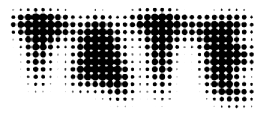Tate’s vision is to serve as artistically adventurous and culturally inclusive art museums for the UK and the world. Our purpose is to champion the right to art for everyone.
We deliver this through activities in our four galleries across the UK, our digital platforms and collaborations with our national and international partners. At the heart of Tate is our collection of art, which includes British art from the 16th century to the present day, and international modern art from 1900 to the present day. Tate Britain at Millbank, London, was founded as the National Gallery of British art in 1897 and became the Tate Gallery in 1932. In 2000, it was renamed and became Tate Britain. It is distinctive in its remit to show British historic, modern and contemporary art from 1500 to the present day.
Tate Liverpool is one of the UK’s most popular galleries of modern and contemporary art outside London. Opened in 1988, it is renowned for presenting world-class displays and exhibitions that contribute to current debates in the visual arts and wider cultural field, as well as commissioning new works.
Tate Modern at Bankside, London, was opened in 2000. Tate Modern presents the national collection of international modern and contemporary art. June 2016 saw the opening of a new, ten-storey extension to Tate Modern that redefined the museum for the 21st century, providing more space for visitors to engage with the expanding collection, including art involving photography, film, video and performance, transformative new spaces for learning and social spaces to unwind and relax in the gallery.
Tate St Ives, opened in 1993, offers a programme of international modern and contemporary art in a way that is inspired by the context of Cornwall. Tate St Ives underwent a significant transformation in October 2017, doubling the gallery spaces and creating new learning spaces. The success of the new Tate St Ives was recognised when it became the proud winner of Art Fund Museum of the Year 2018.
For more information on our recent work and achievements, please visit www.tate.org.uk/about-us/tate-reports
OUR VISION AND OBJECTIVES
Tate will serve as artistically adventurous and culturally inclusive art museums for the UK and the world. We want to celebrate the art of the past and present in its complexity and diversity, supporting artistic risk-taking and deep scholarship, shared with all our audiences, in our buildings, in exhibitions we tour, through works we loan and across our digital spaces. We see access to art for everyone as a universal human right and we see our galleries as sites of creative learning.
We want to champion the importance of making art and encourage people to explore the many ways in which art is created and develop their own creative potential. We hold the national collection of British Art, spanning 500 years, and of modern and contemporary national art that reaches across all continents: we share and celebrate access to this collection and a deeper understanding of its importance.
Tate is a leading global institution, and we will continue to influence critical thinking about art practice. Tate is committed to maintaining free entry for audiences to our collections. We want to welcome audiences that better reflect the towns and cities in our nation and attract a diverse international public. Our reach is already powerful. We intend to increase its impact across society, with art that will resonate around the world
HOW TATE WORKS
Tate has three connected charities. These are independent and do not impact on Tate’s operating policies. They work closely with Tate and have the aim of helping Tate fulfil its mission for the public benefit.
- Tate Foundation (an independent charity created to further the charitable purposes of the Board of Trustees of the Tate Gallery through active fundraising, investment and membership schemes).
- Tate Americas Foundation.
- Tate Canada Foundation.
Tate Enterprises Limited is a direct subsidiary of the Board of Trustees comprising three divisions: Tate Commerce, Tate Eats and Tate Business. Through these companies Tate operates its highly successful trading activities: publishing, brand licensing, catering, retail and consultancy. All profits go to support the work of Tate.
Government funding is received from the Department of Digital, Culture, Media and Sport (DCMS) and the requirements are laid out in Tate’s management agreement with the department. Tate is accountable to the public via Parliament for the services it provides. As such, it is required to demonstrate that it is conducting its operations as economically and effectively as possible. Tate supplements the grant it receives from the DCMS through other sources, including trading, membership, admissions to temporary exhibitions and fundraising activities.
When Tate closed its galleries at the end of March 2020, we had just experienced one of our most successful years, generating 70% of our own income and welcoming record visitor figures to many of our galleries. In stark contrast, over a year later, the impact of the pandemic has changed everything for us, as it has for so many other organisations and communities around the world.


